- Y.SH
- information
- 27056 views
- 3 comments
Faravahar is the most famous symbol from ancient Persia. It depicts a winged sun disk with a seated male figure in the center. Ahura Mazda, the Zoroastrian God, has also been interpreted to represent other concepts, including:
- Fravashi (Guardian Angel)
- Farr or Khvarenah (Divine Grace)
- The Fravashi of the king
- Divinity in general, and royal power
- Personal spiritual power
- The tenets of Zoroastrianism
It should be noted that all of these interpretations are modern. No one knows what the Faravahar meant to the ancient Persians who created the symbol.
Various civilizations worldwide have depicted the winged sun disk in art, architecture, and cylinder seals, including Egypt, Babylonia, Sumer, Assyria, and Judah. It first appeared in its present form during the Achaemenid Empire (c. 550-330 BCE) and continued in use until the fall of the Sassanian Empire (224-651 CE) to the Muslim Arabs in 651 CE.
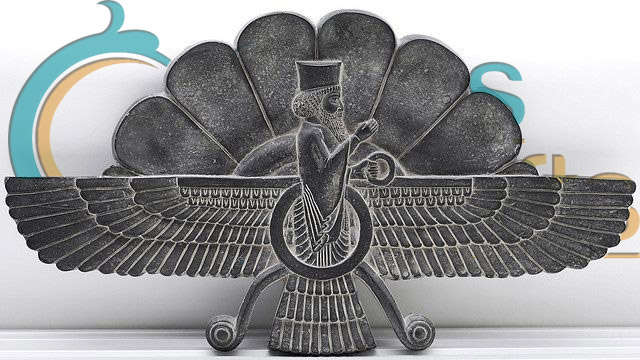
After the suppression of Persian culture, the symbol and its symbolic meaning was lost, but the symbol itself was preserved in ancient inscriptions, paintings, and buildings. Today, it is recognized as the national symbol of Iran while also retaining its association with Zoroastrianism and lending itself to various New Age spiritual adherents who interpret it as depicting the flight of the soul from the entanglements of the world, enlightenment, or union with God.
What Does the Faravahar Symbol Indicate?
It is a human emblem of good words, good deeds, and pleasant thoughts. Some Iranologists and archaeologists regard the winged body, or Farvahar symbol, as a symbol of Ahura Mazda; nevertheless, there is much debate over this. This difference stems from the fact that no image can be given to Ormazd in Mazdisna's religion, whereas Iranians believe in the existence of Fravashi before the birth of Zoroaster. As a result, this image existed before the Achaemenids; however, its effect dates back to the Achaemenid period. An old picture that can be seen in Pasargad and Naghsh-e Rostam is imprinted on the historical monument of Persepolis and the Palace of the Three Gates.
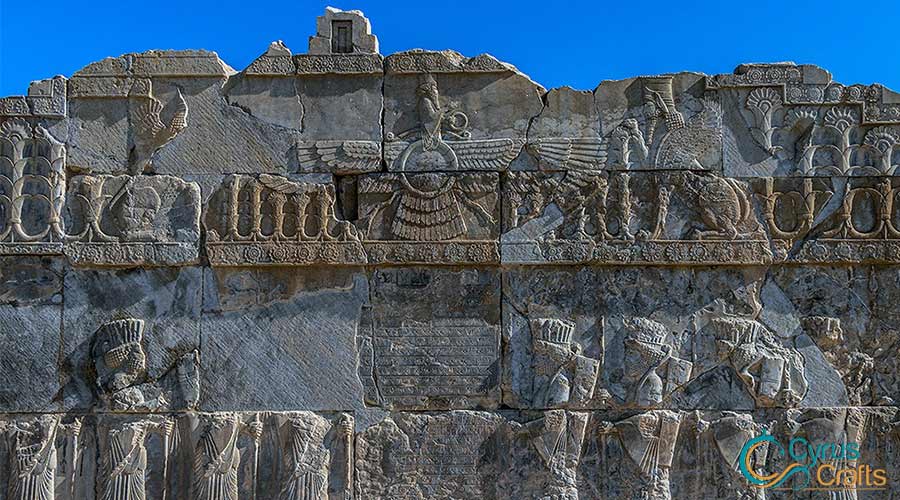
Farvahar symbol was the ancient Aryan name for what we now call "spirit," which is an Arabic word. It is known as "Fravashi" in Avestan and "Ferorti" in ancient Persian, and it is the essence of existence that is eternal, eternal, and immortal. It is referred to as an Ahura ray given to humans.
Cyrus Crafts; Luxury & Unique Products
What Exactly Is a Fravashi?
The word's origin relates either to divine protection or to one's moral choice of Good or Evil and one's choice of the Good Religion. But there is much more to it than that. The concept of the Fravashi as a guardian spirit does not occur in the Gathas of Zarathushtra. But in later Zoroastrianism, it becomes a most important idea. The Fravashi is part of the human soul that is divine, unpolluted, and uncorrupt. It is not only our divine guardian but our guide; its perfection is always within us, as an ideal towards which we can reach.
Every human being has a Fravashi; even the divine spirits have them. Once a human being has finished life on Earth, the Fravashi, the higher individuality of that person, returns to Heaven.
Avesta (Zoroastrian scriptures) describes Fravashis of the righteous as fierce fighters for Good. In a long prayer called the Farvardin Yasht, litanies praise and revere the Fravashis of the early "saints" and heroes of Zoroastrian tradition. The Fravashis of the good departed are supposed to return to Earth on special days, and towards the very end of the Persian year, in March, just before the Persian New Year, there are ceremonies to honor the Fravashis of the righteous.
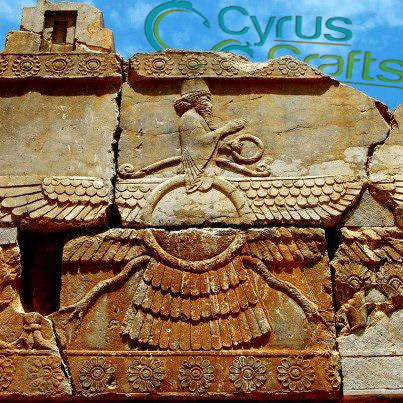
According to other sources, a renowned British orientalist and Iranologist, Harold Walter Bailey, claims that Fravashi derives its meaning from the Iranian words var- (protection, cover) and fra- (repulsion), with its primary meaning being "protective heroism." "Farrah" means ahead, and "Vahr" means "winning and killing," so "Fravashi" means "advancing the essence of body and mind." Next to "Vavar," Vahr also means "belief," hence Fravashi can be interpreted as "first belief," I am first," and "dynamic power."
Faravahar Meaning: The Meanings of Each Element of Faravahar
What the Faravahar symbolized to the Persians remains a mystery, even though it was famous in ancient Persia.
According to Zoroaster, a great Iranian philosopher and the founder of Zoroastrianism, the Faravahar represents his principles of ''Good Thoughts, Good Words, and Good Deeds.'' It's also said to represent a Fravashi (a guardian angel), which gave it its name. This symbol also represents life after death. Faravahar'sFaravahar's message is that if you behave well and live a humble life here on Earth, you will be rewarded with a good life after death.
It is worth taking a closer look at each element of the Faravahar symbol to understand its significance.
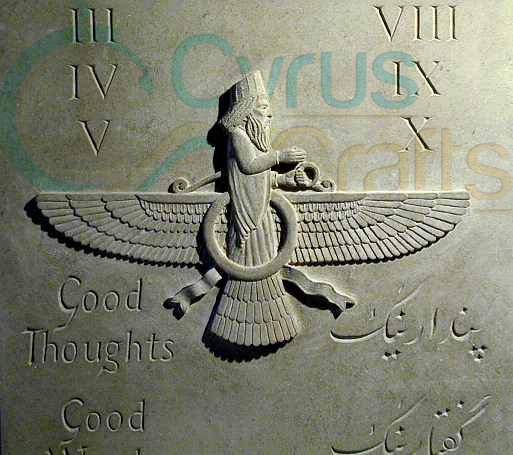
Wisdom of Age: the male figure in the Faravahar is said to be an older man who reminds one that the elderly can be good guides. It also serves as a reminder to pay attention to advise from experienced and wise individuals.
Three Principles of Zoroaster: In the center of the diagram, there are two wings separated into three segments, one on either side of a man. These indicate the three principles of Zartosht: good reflections, good words, and good deeds.
Three Opposing Principles: the lower part of the symbol (similar to a feathered tail) is divided into three parts. Their meaning is opposite to those of the wings, representing "bad reflections, bad words, and evil deeds." This suggests avoiding bad choices and staying away from wrong paths that can bring misfortune and misery.
Positive and negative forces: on either side of the Faravahar are two loops representing positive and negative forces, respectively. Keeping our eyes on the positive side of life and turning our back on the opposing forces is represented by the loop of positive forces at the face and opposing forces at the back.
Spirit, universal, and soul are eternal: the central circle around the older man symbolizes that spirit is endless, universal, and soul eternal. Since it's a circle, it clearly shows no beginning or end. The central ring also indicates that the consequences of a madman's actions will return to him in this world, while the righteous soul will enjoy the reward in the next.
Choosing the Right Path: one of the older madman's hands on the Faravahar points upwards to show that there's only one direction to choose: the forward path.
Faithfulness and Loyalty: on the other hand, is a ring known as a ring of promise, which shows respect for promises. Some interpreters say it's a ring of the covenant used in wedding ceremonies to represent faithfulness and Loyalty.
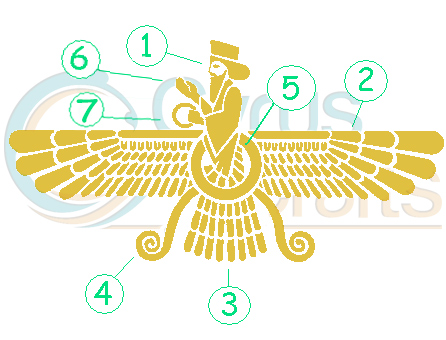
Although there are several different interpretations of the individual elements of the Faravahar, all of these are relatively new and came into existence after the 20th century. Therefore, we may never know what the symbol represented exactly in ancient times.
Which Historical Places Are Associated with the Faravahar Symbol?
Persian Faravahar is a common symbol in Iran. It has been depicted on the tombs of Achaemenid kings, such as Darius the Great (r. 522-486 BC) and Artaxerxes III (r. 358-338 BC) in Iran and varies from one carving to the other. Faravahar was also used on the coins of the Frataraka of Persis in the late third and early second BC centuries. But the Faravahar reaches its most elaborate and finely wrought perfection in the carvings of Persepolis, the center of the Achaemenid dynasty. The Faravahar of Persepolis is the one Zoroastrians have adopted as their symbol. When it must fit a horizontal, narrow space, the winged disc is depicted without the human figure in the disc. But when there is enough space, the Faravahar is shown in all its glory, with the kingly figure, disc, streamers, and many-feathered wings. And, as it had done throughout history, from Egypt to Mitanni to Assyria, it represents the divine favor hovering above the king.
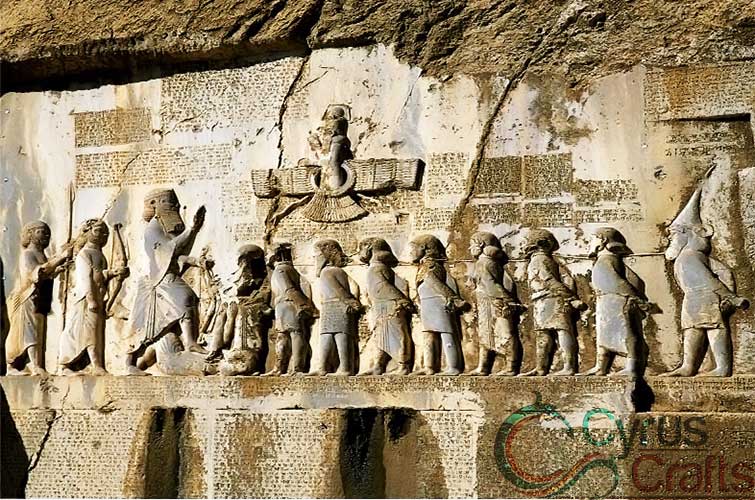
From the start of the 20th century, the Faravahar icon found itself in public places and became a known icon among Iranians (modern Persians). The Shahnameh, written by the great Persian poet Ferdowsi contains ancient Persian history, including Faravahar. Ferdowsi'sFerdowsi's tomb, which many Iranians visit every year, also contains a large Faravahar icon. Many modern buildings in Iran display the Faravahar symbol.
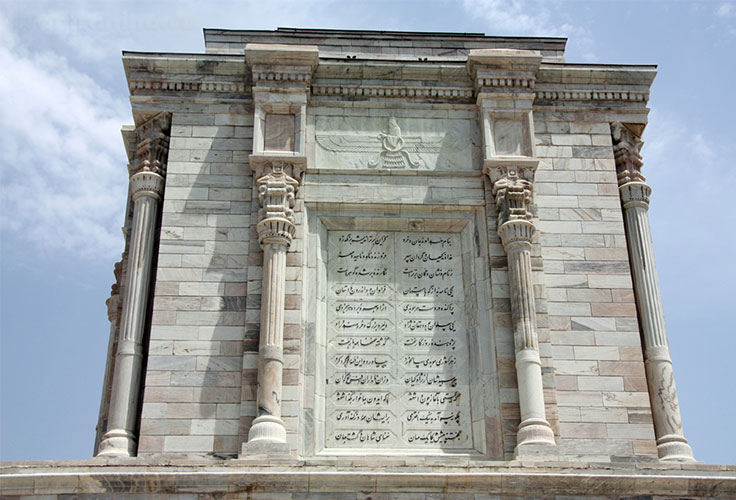
Nowadays, Iranians wear the Faravahar icon as a pendant, which has become a cultural symbol that characterizes Iran (Persia). Also, they use this symbol a lot in making their accessories. Iran is a country with a democratic basis. Therefore, even Persian Muslims wear pendants decorated with this symbol. Nowadays, it is not a Zoroastrian symbol only. Everybody in the country has cherished it.
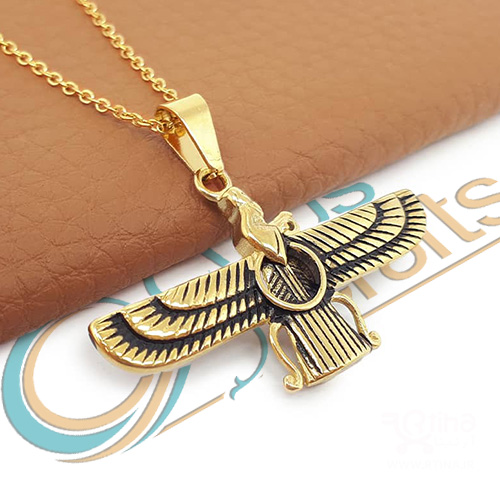
Here Is the History Behind the Faravahar Symbol
Faravahar is a symbol very dear to ancient Iranians. Despite deriving from the ancient Persian religion Zoroastrianism, it has lost its religious significance and is now considered a cultural symbol.
Faravahar means ''guardian angel'' and represents life after death. It says that if you behave well during your life on Earth, you will be compensated with a good life after death. Today this meaning has been extended to everyday life.
In short, the Faravahar symbol reminds us that we will be good people with satisfying lives if we think good thoughts and speak good words.








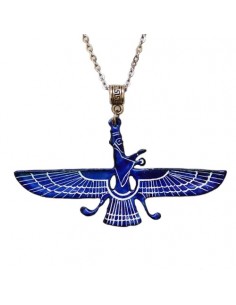

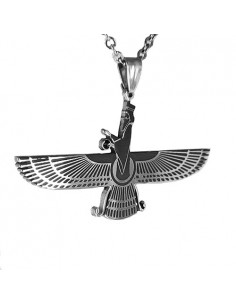

Comments (3)